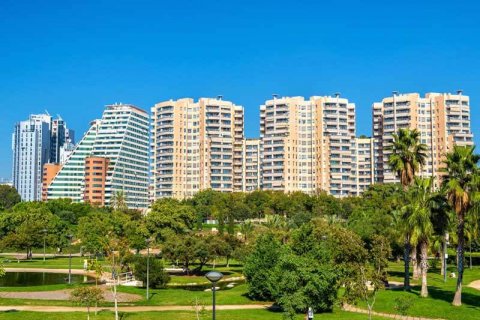
After COVID-19, the Spanish real estate market is going through extremely good times. Positive growth trends, at the moment, are not overshadowed even by the growing global problems caused by the escalating global crisis and international tensions due to the conflict in Eastern Europe.
On the contrary, home sales are growing especially strongly, as buyers and investors are looking for an early opportunity to invest their funds in more or less reliable assets or, banally, buy a new house while the market situation is still positive. However, when thinking about buying residential real estate, one of the first questions that a person will ask is the choice — to buy a new building or turn to the secondary market? Consider the pros and cons.
According to the latest data, the total number of real estate transactions in April 2022 reached 90,617 transactions, which is an increase of more than 5,000 in annual terms — by April 2021. According to Eduardo Moli, a real estate expert, there are currently few proposals for new construction in Spain, which causes an extremely active increase in prices for those objects that are still on the market. From the point of view of price growth, it is advisable to pay attention to the secondary sector. The latter offers a broader offer, diverse and, so far, relatively cheap.
The partner of the HiHomie real estate agency, Victor Lopez, takes a little deeper into the pros and cons of new buildings and the secondary market.
Advantages of the primary market
One of the predictable advantages of new housing is its modernity and the quality of the brand under which it was built, which distinguishes new buildings from old housing that has changed several owners and, from part, is a cat in a bag. There are guarantees for new construction, and the real estate units have a longer «life span». In addition, such objects have a more modern design, layout and design, materials are usually of much better quality. In general, such housing can boast of more economical energy consumption and thoughtful equipment.
Advantages of the secondary market
The very first and obvious advantage is a lower price. This is one of the main criteria that most buyers look at. Yes, there are always risks that even a house in good quality may start creating problems in the near future, banal because of its age, but nevertheless, with the help of a reliable agency, it is easy enough to weed out questionable offers.
Anyway, «here and now» such real estate will be cheaper, it will already be habitable, so moving takes less time, it is located in more developed areas with a good location. In addition, it is extremely rare for such houses to be located near vacant land plots, and this guarantees that having bought this housing today, for example with a good view of the suburbs, in five years the tenant will not open his windows with a view of a new multi-storey residential complex, in the shadow of which he will now have to exist.
Rising prices
The average cost of housing continues to grow both on a quarterly basis and in annual terms. Thus, at the end of the first quarter, the cost per square meter of residential real estate in Spain reached 1,911 euros, which is an increase of 3.1% by the fourth quarter of 2021. A big role was played by the «catching up» growth of the secondary segment — 3.5%. So expensive new real estate grew by only 1.6%. It should also be pointed out that for every 10 home purchase transactions, only 2 were on the primary market. Some of the contracts. prisoners in this market had a waiting period of up to 2 years.
Large structural changes are visible in the annual period. The average cost per square meter was 1,856 in the country, which is an increase of 5.3% in annual terms. Here, too, the trend is formed by a strong relative rise in the price of the secondary sector — 6.8%. Expensive new housing was able to grow by only 1.4%. In total, 32,316 transactions for the sale of new real estate were registered, which is an increase of 13.2% compared to the previous quarter. The secondary market accounted for 131,983 transactions, which demonstrates a quarterly growth of 14.3%.
As can be understood from the available data, the increase in prices for new homes in Spain remains significant even despite the already high prices on the market. One of the reasons for the current and projected growth, according to Eduardo Moli, is the increasing cost of building materials. Suppliers do not have time or cannot sell enough materials today and are not sure about the situation in the long term. Many projects under construction are put on pause and the question of when to wait for new arrivals to the market remains open. So far, no strategy has been formed to overcome the existing problems.
Meanwhile, HiHomie believes that the cost of new buildings will remain high in any outcome, since, firstly, even with the resumption of construction, it will be impossible to meet demand in the near future, and secondly, there is simply not enough land in the regions suitable for new construction.
